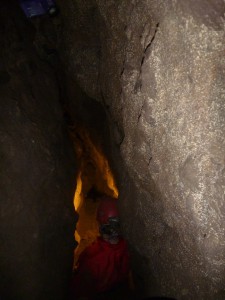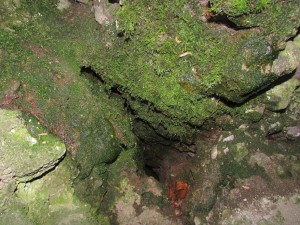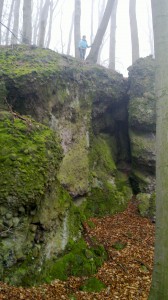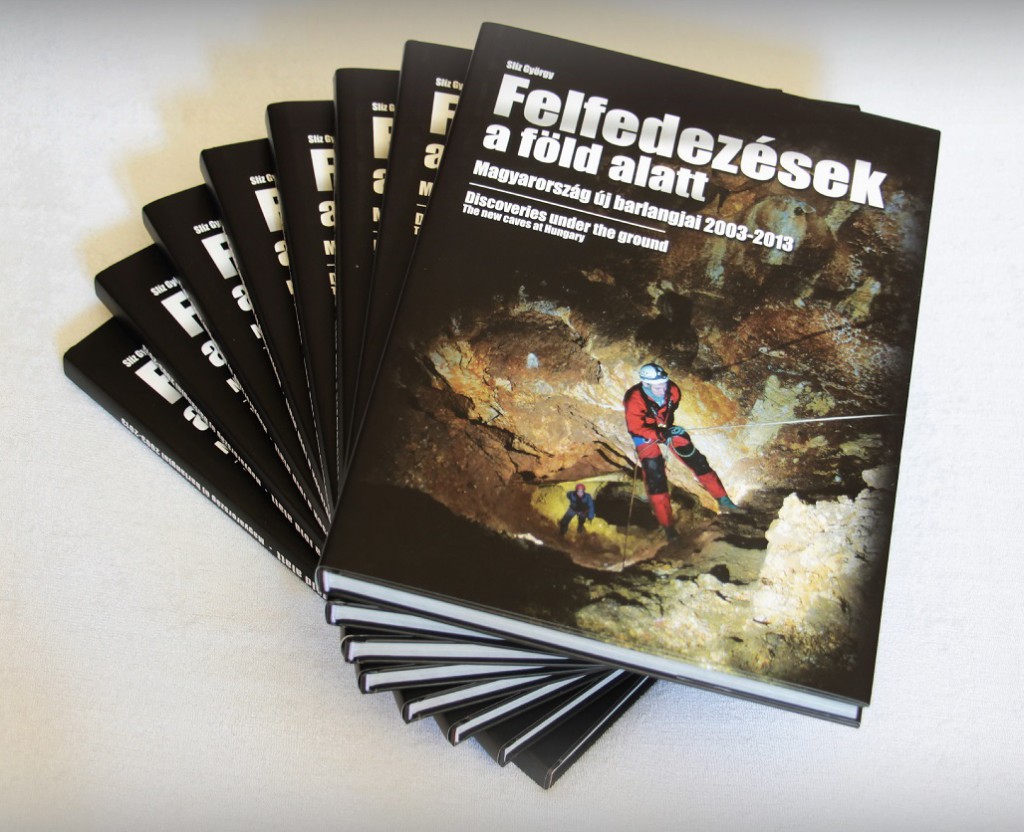Many caver and cave explorer think it’s useless to waste time and energy exploring caves in vulcanic area in Hungary.They usually small and narrow holes which were created by tectonic movements.We can’t compare them with those spectacular lava tubes in active vulcanic areas such as Hawaii.The biggest one is „Csörgő-lyuk” in Matra, it’s 428 meters long.The „cave” ( Cave as concept has very permissive parameters in Hungary.The most important one is: a cave has to be at least 2 meters long,natural hole or crevice, must be passable for a human being) is 12 meter long crevice northward from Dobogókő and it’s located with 80 meters higher than „Hideg-lyuk” (Cold-hole) the other air flowing hole in the area.
We have found it after a half day long digging.In the picutre below you can see how small it’s „entrance” was.
We had to use slotter to break this vulcanic agglomerate.Probably it was the most effective way for going ahead.
The area northward from Rezső-viewpoint (Dobogókő) is a 40 meter broad a few hundred long depressed area which is perpendicular to inclination of the hillside.One side is a steep hillside from the viewpoint on which you can see vulcanic agglomerate and it looks like a built castlewall.Downward you can find many smaller (5-10 deep ) crevice.Many of the have also air flow in their entrance.These objects shows us the traces of a huge earlier hillsliding.At the bottom of this slided area we can find the so called Cold-hole Cave.It’s only a few meter long crevice too but with a huge icy-cold breeze.
What we can ecpact here from the viewpoint of research?Regarding tectonical conditions and holes with draught, the „Csörgő-lyuk” in Mátra-mountains we can also explore a 100 meter long passages and spaces under these enormous rocks here.But it’s also possible that these draughts come from only few thousand narrow, impassable crevices or rubble.





